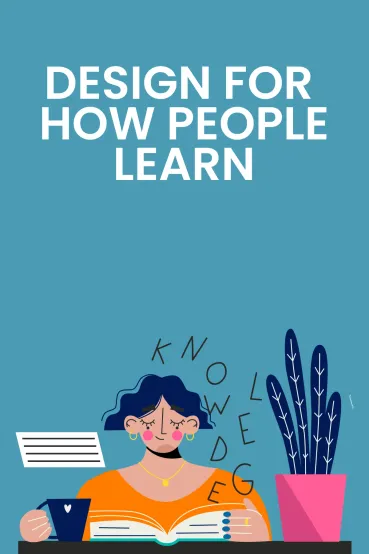
Design for How People Learn
Brief Summary
“Design for How People Learn” by Julie Dirksen reveals the secrets to successful student learning and methods for making your classes fun and engaging. This information will give you insights into effective memorization, excellent communication with students, and good teaching.
Key points
Key idea 1 of 6
The hero of our story is Sven, the head graphic designer at a promising startup. He will soon be mentoring the newbies in the typography department. Sven has been preparing carefully; one might even say he has gone the extra mile. And so, when he starts sharing detailed information, he doesn't even bother introducing himself but gets straight to the point.
The issue at hand is that he is well-versed in typography but lacks familiarity with his students. First, he would have to determine what knowledge his students have. That's how he would find out that Juanita, a typesetting enthusiast with a fondness for Helvetica, sits in the front row. In the back, he would locate Liam, who only used Times New Roman. Understanding your students is crucial for tailoring your study material to their knowledge and objectives.
First, determine whether the person's problem is a lack of experience, knowledge, or both. Let's say you all need to hike the Appalachian trail together. Experienced climbers may possess the necessary skills but lack specific knowledge, like what route to take or the current weather conditions. On the other hand, novice climbers need more expertise and experience. Before undertaking challenging expeditions, it is essential to provide beginners with fundamental training. For example, teach them to put up a tent or sharpen a knife.
Second, measure your students' motivation. A motivated student can progress more rapidly than a person without encouragement. While a Francophile would enthusiastically learn French, someone who plays the bassoon may have a different inclination. It is vital to identify topics they are curious about. For instance, if a student is passionate about the bassoon, you could dedicate a lesson to Adolphe Blaize, the renowned French bassoonist. Although it may require extra effort, customizing your classes to resonate with their preferences can be rewarding.
Most importantly, continue learning new things about your students. There should be a two-way exchange of information during class, so ask them to explain concepts they've learned and demonstrate skills. This interactive method lets you gauge their performance, identify areas requiring further clarification, and provide timely assistance.
Finally, your students need to be involved in organizing the course. Allowing them to vote on the course structure and determine the topics you are going to cover raises their team spirit. Moreover, this makes them feel in control of their learning journey. If your students know a topic perfectly well, you may permit them not to take that class.
FAQ
You may also like these summaries











